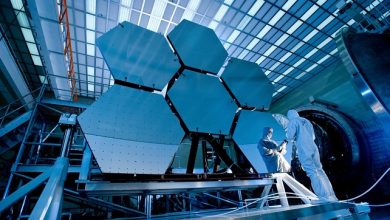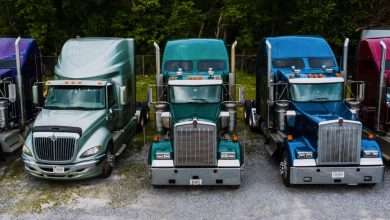Transforming Ecosystem of Telematics
Author: Markus Pfefferer, Managing Director Asia Pacific, Ducker Worldwide

Imagine yourself a couple of years in the future….you are driving yourself home, only you are not really, driving-you are steering a car that is automatic, and mostly driving itself. The gear shift is automatic, the speed is set to a pre-determined level, and all you really need to do is steer gently.
As you get close to your apartment complex, the car sends out an automatic alert to the security staff to allow you to enter, while your smart phone alerted by your GPS location automatically gets the air-conditioning switched on. At this point in time, it may seem a bit like a scene from Star Wars, but in actual fact, the technology is in place, and the expectations from automobiles, is far more driven by electronics than mechanics. This is turn obviously has a huge impact on the eco system that drives the industry. A clear parallel is the IT industry, whereMicrosoft and other such major PC manufacturers are scrambling to find a place in a market that is evolving at a supersonic pace.Physical storage space is no longer of any consequence, as storage has shifted to the cloud, and both business and shopping are now done by smart phones. Like the Dinosaur, those that do not evolve, perish.
Automobile companies are slowly awakening to the fact that the manner in which cars are being made is changing rapidly from the mechanical to the digital. Where they are in for a rude awakening is the fact that the way cars are being bought is also changing rapidly. Car showrooms as they exist today, would largely become distribution points where people pick up vehicles that have been researched, bought and paid for vide the internet. It would make a lot of sense for car distribution companies to move their heads out of the sand, recognise this fact, and begin developing superior websites and internet platforms and payment gateways, rather than fancy showrooms.
To respond effectively to a changing market, and stay ahead, traditional auto makers and sellers will need many digital capabilities. These will include digital sales and marketing,multi-channel customer engagement, and the ability to package and deliver digital products and services. In the operations sphere, they’ll need data and content management skills, along with the ability to manage digital infrastructure, protect customer identities, secure information systems, and manage service-oriented technology, while overseeing a digital operating model and numerous outside partnerships. To hold their own in the Internet of Things, auto makers will need to manage sensors and connected devices, create mobile-to-mobile services, and analyze reams of data generated by autonomous vehicles.
The most important change will be cultural. The automotive industry culture has always been supply-driven — companies push products into markets and try to persuade people to buy them. The focus is on shaping buying behaviour to fall in line with what the companies produce. On the other hand, Digital companies cultures, respond to customer demand – their major spend is on advanced technology and analytics to meet rising expectations. Marketing spend is extremely low.
The other major change stems from the fact that currently auto companies have analog cultures. They have a slower decision making process and multiple layers of hierarchical management. They are ruled by systems and processes, that in large measure have not changed much since the inception of the industry. The graduate to being more progressive, auto companies would have to adopt a more digital culture, with flat hierarchies that speed up decision making. The focus would have to shift to result over process, and workers would need to be empowered to innovate, knock down barriers, and achieve goals. The ideal worker would have vision, curiosity, flexibility, and motivation. Collaboration would become critical, with mixed teams from various functional specialties working together on projects. This reflects the dynamic tech industry, where change is rapid and unpredictable, innovation essential to survival, and quick action critical to victory.
Obviously the key to staying ahead of the pack would be to meet customer demand in a way that is both unique and technologically advanced. Once the technology has been perfected, the OEM would need to build the capabilities to create this type of vehicle at global scale, even if it means selling under other brands (so long as you control the arrangement). Try a variety of digital ventures that can unlock data value. Move from a transaction-based business model, selling cars, to a service-led setup in which your customers become customers for life.
For volume auto makers, it would also be necessary to find a viable economic equation: a way to offer the right digital features to the right customers in a way that integrates you into this new world with affordable prices. They might look to share the R&D burden with other companies through smart cooperatives. Other ways might include to launch own digital ventures, on your its own or in partnership, to unlock data value. OEMs will have to find ways to remove bureaucratic blocks so they can unleash creativity and practice frugality at the same time. The ultimate goal will have to be to shape and support mobility ecosystems and design cars for the shared-vehicle drivers of today and the driverless passengers of tomorrow.
In the future, consumerswill want the flexibility to choose the best solution for a specific purpose, on demand and via their smartphones. Therefore the importance of private-car ownership will be declining. So has the share of young people (16 to 24 years) who hold a driver’s license in the United States dropped from 76 percent in 2000 to 71 percent in 2013, while there has been over 30 percent annual growth in car-sharing users in North America and Germany over the last five years.
At the same time, the objective is not necessarily to be the company with the most cutting-edge connected car. Those that are first to bring this technology to the market will need to balance their own R&D with cooperation- and platform-based innovation to avoid the “winner’s curse” of ultimately losing out to competitors that improve upon the technology. Apple has rarely been the first to innovate, but has a record of success in scaling up technology that others have originated. Being best rather than first is even more important when the product is an automobile which carries people and puts their lives at stake.
In a way the connected car is the leading edge of disruptive technology as it is changing not only the automobile, but the nature of the automotive industry as whole. As connectivity paves the way for autonomous driving, digital content and services have become the industry’s primary source of growth. More fundamentally, OEMs oriented to their traditional role as product manufacturers must embrace a new identity as service providers. Those that can make this shift — while providing the security assurances consumers demand — will flourish in the digital era.
With this paradigm shift to mobility as a service, along with new entrants, traditional car manufacturers will be ultimately forced to compete on multiple fronts. Mobility providers (Uber, for example), tech giants (such as Apple, Google), and specialty OEMs (Tesla, for instance) increase the complexity of an already competitive landscape. Traditional automotive players that are under continuous pressure to reduce costs, improve fuel efficiency, reduce emissions, and become more capital-efficient will feel the squeeze, likely leading to shifting market positions in the evolving automotive and mobility industries, potentially leading to consolidation or new forms of partnerships among incumbent players.
Therefore it’s not surprising that the recent conflict between VW and one of it’ssupplierswhich led to a production stop at VW might been more than a sign of poor management but can also be seen as flaring up of how relationships between traditional suppliers and OEMs might change and how disruptive new supply chain management processes with a total now industry like telecom and IT will ultimately change the way business needs to be done in the automotive industry.




